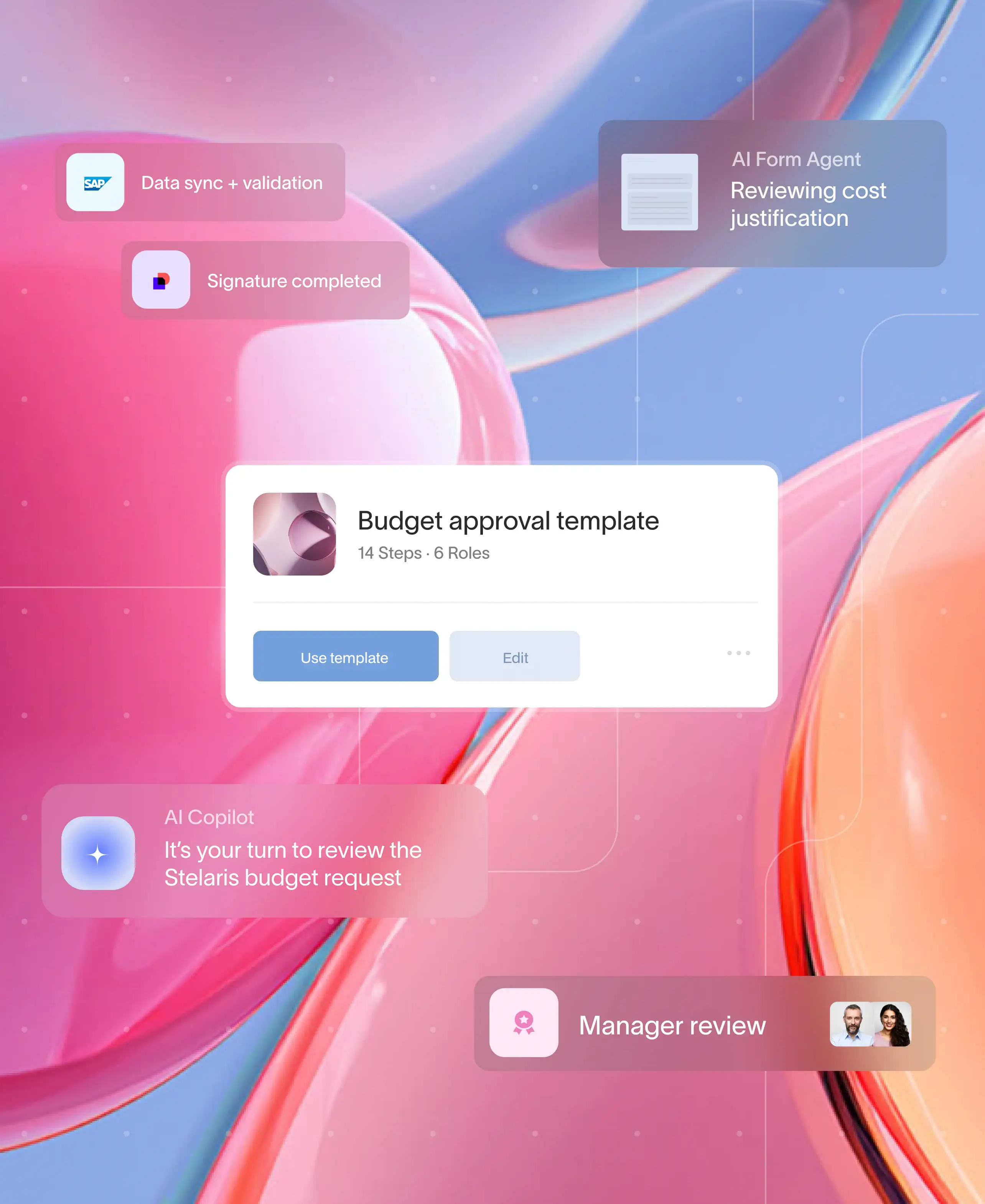%20(1).jpg)
When starting a new project with a client, two key elements are essential for success—client onboarding and implementation. These concepts are closely linked but have distinct roles. Understanding their differences, how they work together, and using onboarding software can help organizations build strong client relationships and achieve their goals.
The connection between client onboarding and implementation
Getting new prospects takes efforts from different teams in the organization such as sales, marketing, and public relations. However, turning these leads into loyal clients depends on effective client onboarding and implementation. When these processes are well executed, they help build strong client relationships, leading to increased loyalty, higher retention rates, and long-term growth.
Customer onboarding
Customer onboarding is the process of guiding new customers through the initial stages of using your product or service. It focuses on ensuring customers understand how to use the product, setting them up for success from the start. Effective onboarding is vital as it sets the tone for the customer's entire experience with your company. A well-executed onboarding process helps customers see the value in your product quickly, which can lead to long-term loyalty.
Customer onboarding goes beyond introductions and helps the client understand the company's culture, values, and procedures. Effective onboarding includes:
- Building rapport and mutual respect
- Encouraging open communication
- Clarifying expectations and milestones
- Educating clients about resources
- Setting the stage for successful collaboration
Key aspects of customer onboarding
- Introduction to the product: Educating customers about the product features and benefits.
- Customer support: Initial hand-holding and support to help customers navigate through the product.
- Understanding customer needs: Gathering information about the customer’s specific requirements and pain points.
A successful onboarding process ensures that customers are fully acquainted with the product and feel confident in using it. This process can significantly influence whether a customer remains with the company or churns after a short period.
Implementation
Implementation, on the other hand, is the technical process of integrating the product into the customer's existing systems and workflows. This phase involves configuring the product to meet the specific needs of the customer, ensuring all necessary features and customizations are in place, and making the product operational within the customer's environment.
Key aspects of implementation
- Technical setup: Installing, configuring, and customizing the software to meet customer requirements.
- Data migration: Moving customer data from old systems to the new platform.
- User training: Providing training to ensure customers can use the product effectively.
- Integration: Ensuring that the new product works seamlessly with the customer’s existing systems.
Implementation is a critical step in making the product useful and valuable to the customer. It requires close collaboration between the customer and the implementation team to address technical challenges and ensure the product meets the customer’s needs.
Exploring implementation within client onboarding
While client onboarding gets them ready, implementation focuses on the practical aspects of deploying services, products, or projects. This phase involves configuring settings, customizing features, integrating APIs, and addressing technical questions. Implementation shows how the client can use the provided resources to achieve their goals.
If we take the example of a creative agency, once clients understand the agency’s style and vision, the implementation phase begins. The team then executes the campaign ideas, fine-tunes visuals, tests ad copy, and finalizes production schedules based on the client’s brief and approval.
Customer onboarding v/s implementation: Important differences
Customer onboarding and implementation are both crucial processes in the customer journey, particularly for SaaS businesses. However, they are often conflated despite serving different purposes and having distinct outcomes. Understanding these differences can significantly impact customer retention and overall success.
Sync between customer onboarding and implementation
Both, customer onboarding and implementation, must be synchronized to ensure a smooth customer experience. While onboarding sets the stage by familiarizing customers with the product, implementation makes sure the product is technically ready to meet their needs. The information gathered during onboarding is essential for successful implementation, as it informs the technical requirements and customizations needed.
While both processes are essential for customer success, they serve different purposes:
- Customer onboarding focuses on relationship-building, understanding customer needs, and providing initial support.
- Implementation deals with the technical aspects, ensuring the product is properly configured and integrated into the customer's environment.
Reaping benefits from a customer onboarding software
Embracing specialized onboarding software allows organizations to tap into unexploited reserves of productivity and profitability. Such platforms streamline cumbersome administrative tasks, eliminate redundancies, and enhance overall user experiences. Among many others, key advantages of adopting a client onboarding software include:
- Customizable templates and automated workflows
- Centralized client databases and analytics dashboards
- Task automation and reminders
- Branded welcome pages and landing zones
- Collaboration tools and chat functions
How Moxo helps
Moxo has a suite of features that helps businesses work together better. It connects different parts, tools, and people, making it easier to talk and serve customers well. Moxo is easy to use and has important features that help new clients join faster, make different teams work better together, and help the company grow. These features are designed to speed up how quickly new customers can start using the service, improve how different parts of the company work together, and help the whole business grow.
- Configurable client portal for streamlined interactions
- End-to-end encrypted messaging and document collection
- Smart forms and approvals automation
- Appointment scheduling and meeting room bookings
- Actionable insights and reporting capabilities
By integrating Moxo into their tech stack, businesses can radically reshape their client onboarding experience, laying the groundwork for fruitful partnerships rooted in transparency, efficiency, and innovation.
Merging client onboarding and implementation is a smart strategy for standing out in a competitive market. With advanced onboarding software like Moxo, organizations can bridge the gap between theory and practice. This leads to smooth integration, scalable solutions, and outstanding user experiences.
Don't wait—start your journey towards better client onboarding and engagement with Moxo today!
FAQs
What is customer onboarding?
Customer onboarding is the process of guiding new customers through the initial stages of using your product/service, ensuring they understand how to use it effectively.
What is SaaS implementation?
SaaS implementation involves the technical setup, configuration, and integration of the software into the customer's existing systems and workflows.
How do client onboarding and implementation differ?
Client onboarding focuses on relationship-building and initial support, while implementation deals with technical configuration and integration.
Why are both processes important?
Both processes are essential for customer success; onboarding ensures customers see the product's value, while implementation ensures the product meets their technical needs.
How can Moxo help with onboarding and implementation?
Moxo provides a comprehensive platform that streamlines and integrates both processes, enhancing efficiency, personalization, and customer satisfaction.





